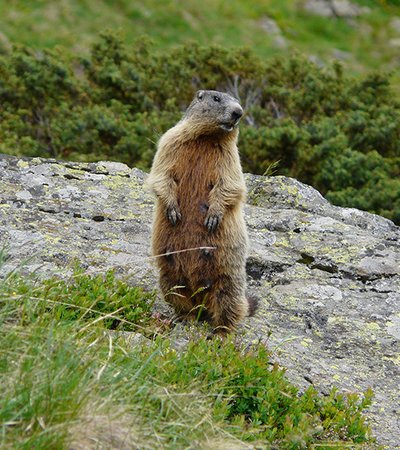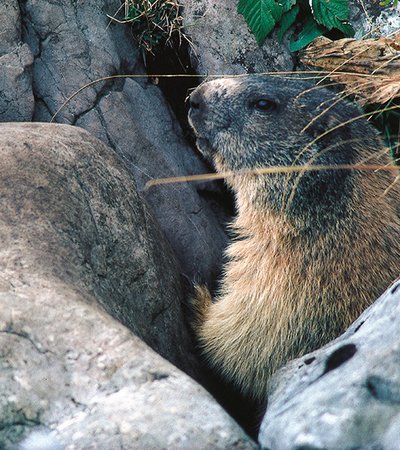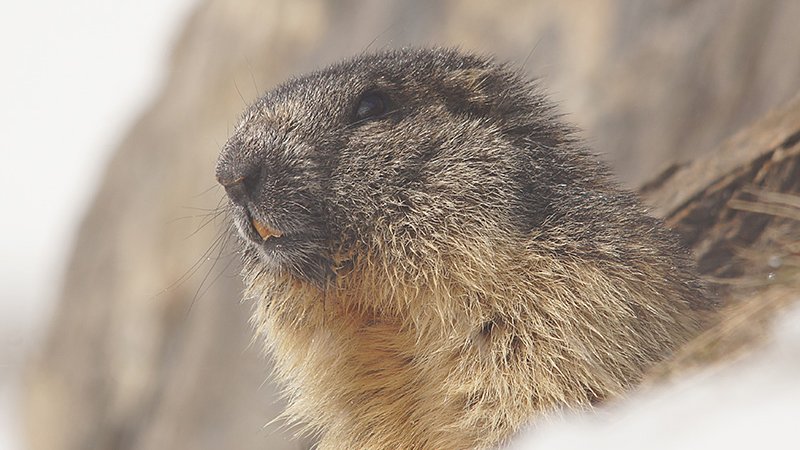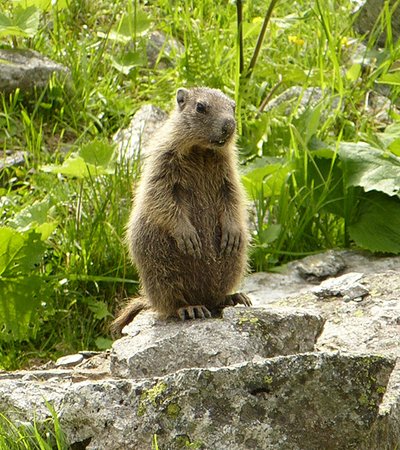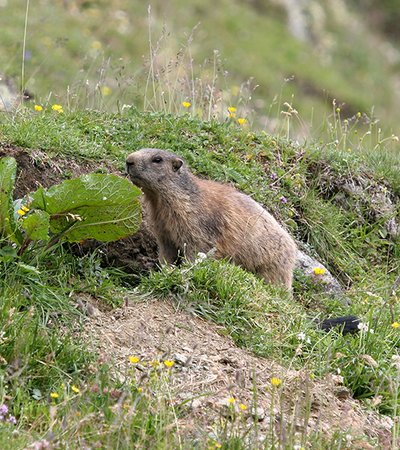Distribution/habitat
The alpine marmot is at home in the central and Western Alps, but can also be found in the Carpathians. The marmots of the Eastern Alps and Pyrenees were originally populated by humans. They prefer altitudes between the tree line up to some 500 m above it. Their dispersal area ranges up to some 3,200 m. Marmots can also be found on alpine pastures below the tree line.
Description/characteristics
Marmots belong to the family of rodents. They live socially in large family groups and feed on herbs and grasses. Apart from the golden eagle, the great enemy of the marmot, they are also hunted by humans, foxes, ravens, tree- and stone-martens. When they sense danger, they alert their fellow marmots with a sharp “call”, which sounds like a whistle. One single, long call means “aerial predator”, a series of calls means the enemy is approaching on the ground.
Special features
The marmots hibernate in their burrows on the padding collected during summer. During hibernation, they draw on their fat reserves.
Endangerment/protection
In Tirol, the alpine marmot is protected. It is also one of the EU-wide protected species of the Fauna-Flora-Habitats Directive (Appendixes II and IV). In Austria it is considered as potentially endangered. Even though there is no evidence for the healing effect of its fat, it is still hunted by humans today, but often only as a trophy. Literature Grzimek, Bernhard (1997): Encyclopaedia of mammals. F.A. Brockhaus GmbH., Leipzig, Mannheim. 6 volumes.




 Natur im Fokus "Alpenmurmeltier"
Natur im Fokus "Alpenmurmeltier"
